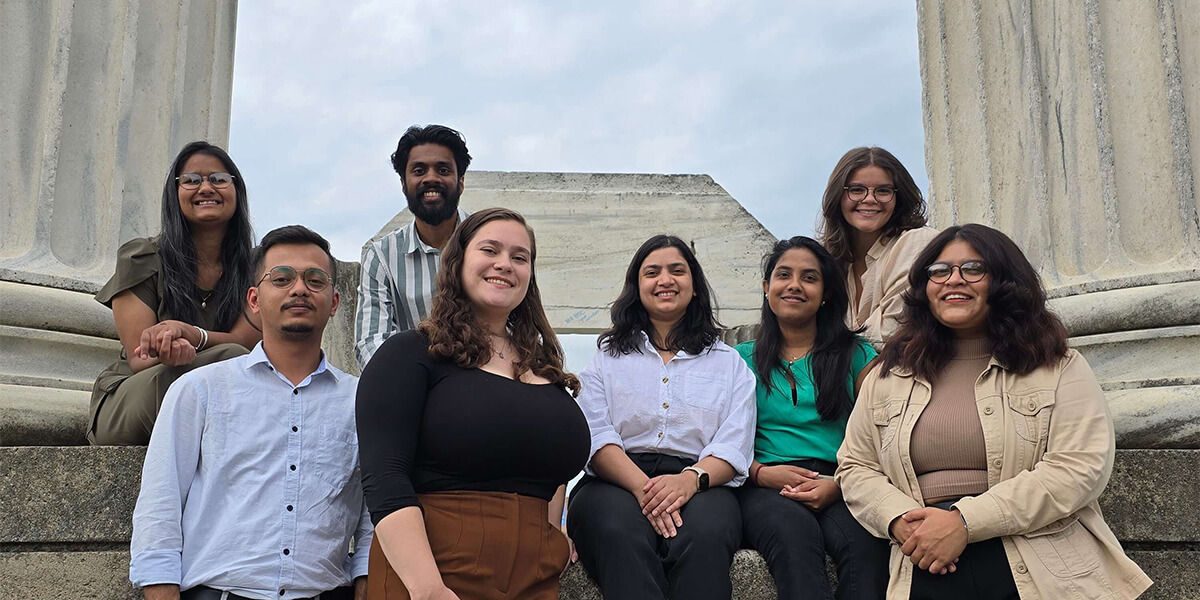| Texas A&M University (Spring 2025) |
Bonds That Matter: Soft Materials for a Sustainable World |
| University at Buffalo (Fall 2024) |
Breaking the Mold: Building Communication to Promote Green and Sustainable Practices |
| NSF Center for Single-Entity Nanochemistry and Nanocrystal Design (CSENND) (Spring 2024) |
Nanoparticle Heterogeneity: Realizing Strengths by Embracing Differences |
| Carnegie Mellon University (Fall 2023) |
Bridging the Gap Between Machine Learning, Computational Modeling, and Experimental Chemistry for Catalyst Design |
| Department of Energy Solar Innovation Hub (Spring 2023) |
A Solar Fuels Nexus: Molecules and Materials for Light-Driven Catalysis |
| University of Rochester (Fall 2022) |
Achieving Scientific Excellence through Interdisciplinary and Collaborative Research |
| Purdue University (Spring 2022) |
Mother Nature Knows Best: Bonding with Nature's Proteins |
Florida State University (Spring 2022)
rescheduled from Fall 2021 |
Illuminating the Field of Photophysics: 100 Years of Michael Kasha |
| Carnegie Mellon - University of Pittsburgh (Spring 2021) |
Bridging Disciplines to Build Better Materials |
| Wayne State University (Fall 2020) |
Pushing the Boundaries: Women Scientists Catalyzing Change |
| University of Michigan (Spring 2020) |
Smart Materials: From Stimuli to Response |
| Center for Aerosol Impacts on Chemistry of the Environment (Fall 2019) |
From Oceans to Clouds: The Environmental Chemistry of Water |
| Louisiana State University (Spring 2019) |
Artificial Molecular Machines and the Next Generation of Molecular Control |
| Duquesne University (Fall 2018) |
Frontiers in Computational Chemistry: Bridging the Gap Between Theory and Experiment, A Symposium in Memory of Dr. Jeffry D. Madura |
| University of Florida (Spring 2018) |
Finding our Place at the Bottom: A Symposium in Memory of Richard Feynman |
| Virginia Tech (Fall 2017) |
Standing on the Shoulders of Giants: Developing Chemistries for Improved Global Health |
| Georgetown University (Spring 2017) |
Chemistry for Global Change |
| University of Pennsylvania (Fall 2016) |
From Bench-to-Bench and Beyond: Engaging People with High Impact Chemistry |
| Purdue University (Spring 2016) |
Resolving the Big Picture; Bringing Molecules into Focus |
| University of Minnesota (Fall 2015) |
Academic Innovations for Tomorrow's Industries |
| University of Notre Dame (Spring 2015) |
Academic Innovations for Tomorrow's Industries |
| University of Washington (Fall 2014) |
International Collaborations with International Impact: Chemistry for Global Change |
| University at Austin Texas (Spring 2014) |
Elements in Transition: Is Chemistry Facing a Revolution or a Recession? |
| University of Cincinnati (Fall 2013) |
The Chemistry of Energy: Minimizing its Input, Maximizing its Output |
| University of California Irvine (Spring 2013) |
Benchtop to Business: Energy Solutions for a Green Future |
| Binghamton University (Fall 2012) |
The Power of Chemistry in Public Health: Drug Development from the Lab Bench to the Consumer |
| California Institute of Technology (Spring 2012) |
Chemical Biology: When two heads are better than one |
| Southern Methodist University (Fall 2011) |
Chemistry by Design |
| University of Texas at Austin (Spring 2011) |
Unleashing Electrochemistry’s Potential: Resistance is Futile |
| Massachusetts Institute of Technology (Fall 2010) |
Chemistry and Policy: Solving Problems at the Interface |
| University of California, Santa Barbara (Spring 2010) |
Chemistry and the Developing World |
| George Washington University (Spring 2009) |
Naturally Nano |
| University of Connecticut (Fall 2008) |
Transitioning into Green Chemistry |
| University of California, Los Angeles (Spring 2008) |
Nanopower ― Creating Energy for the Future |
| Purdue University (Fall 2007) |
Finding Your Catalyst: Lower the Barrier from the Graduate School to Industry |
| Ohio State University (Spring 2007) |
Exploring and Exploiting Nature with Biomimetics |
| University of Illinois, Urbana Champaign (Spring 2006) |
Balancing the Equation: Finding a Personal-Professional Equilibrium |



